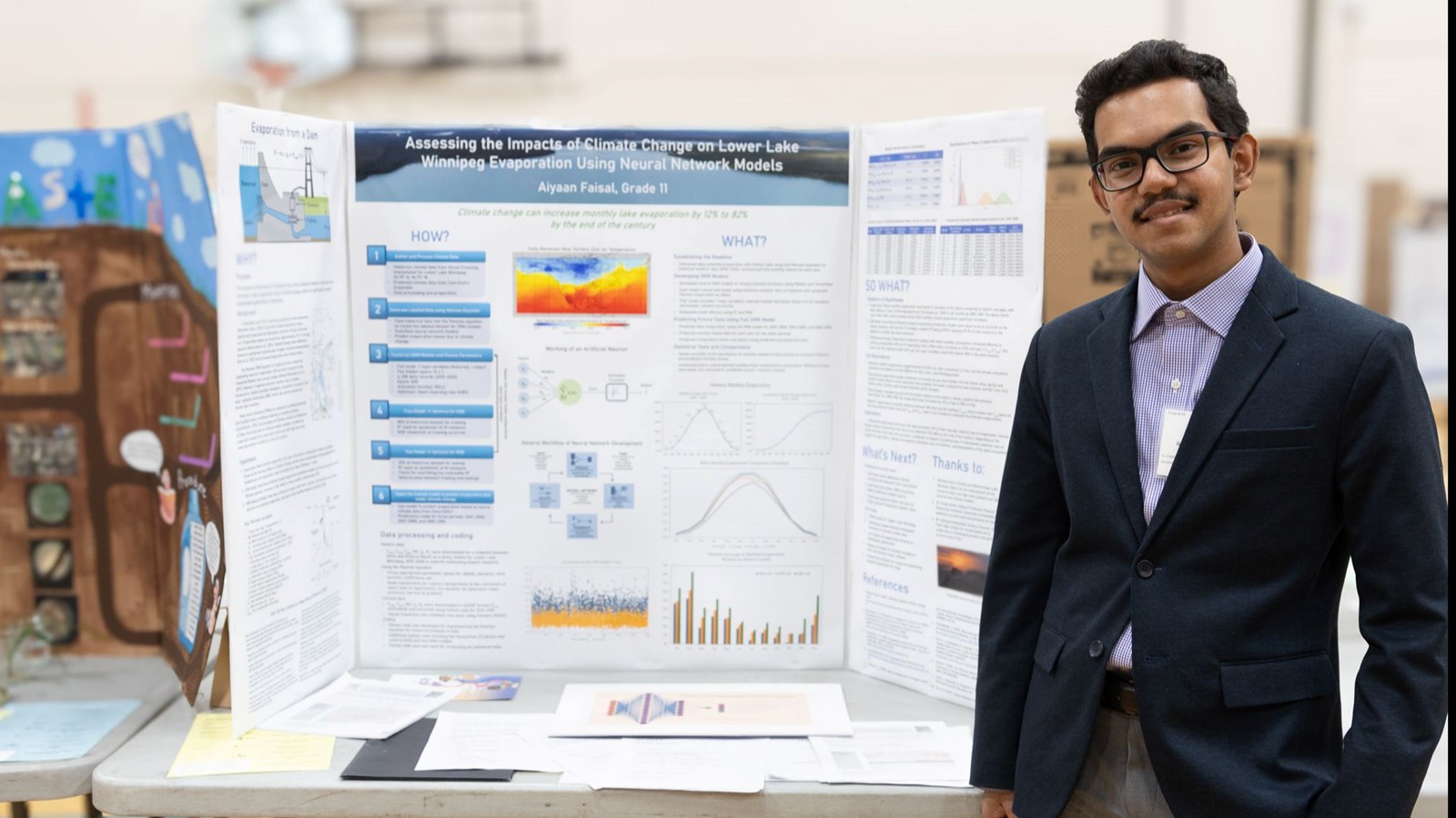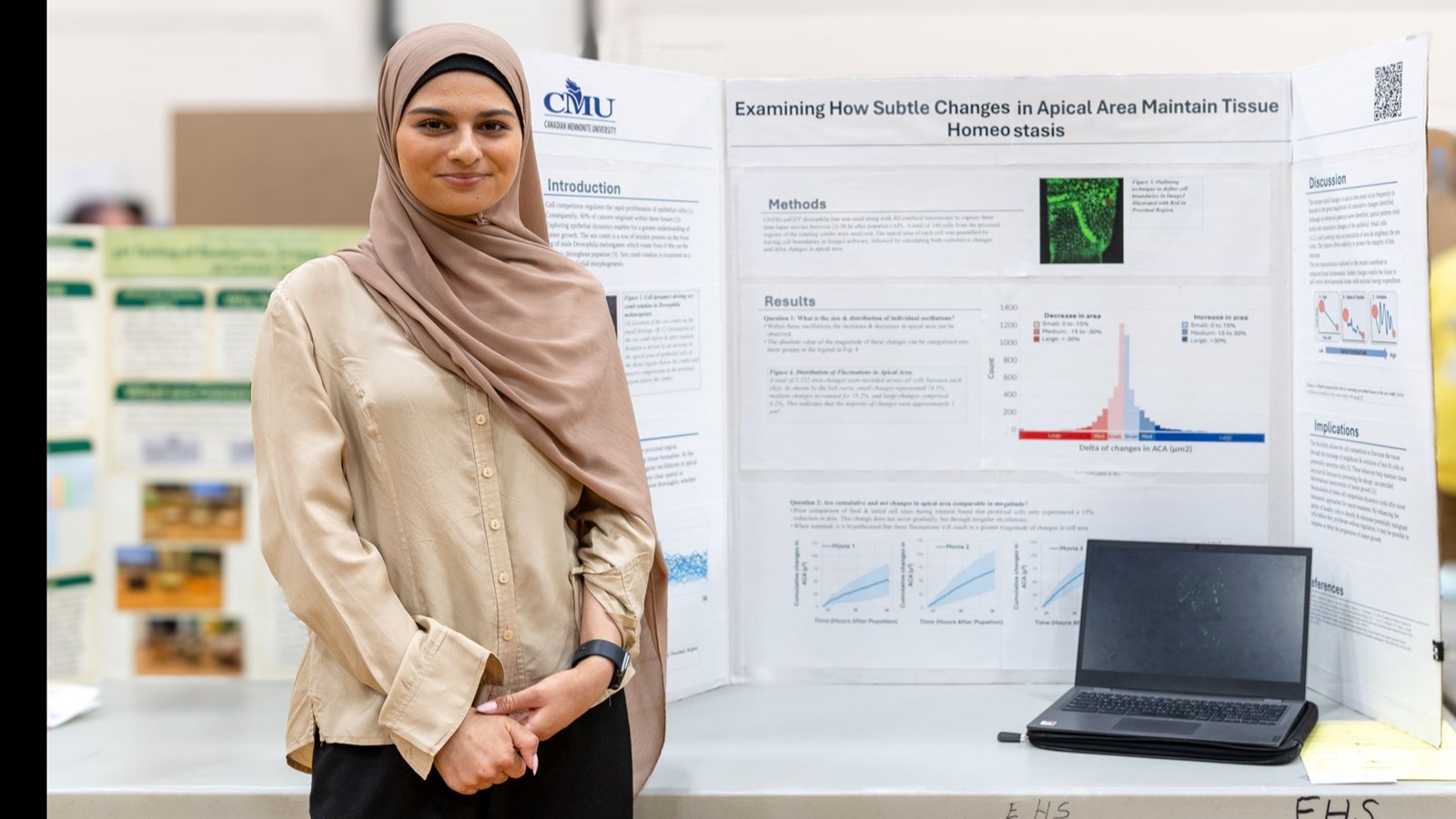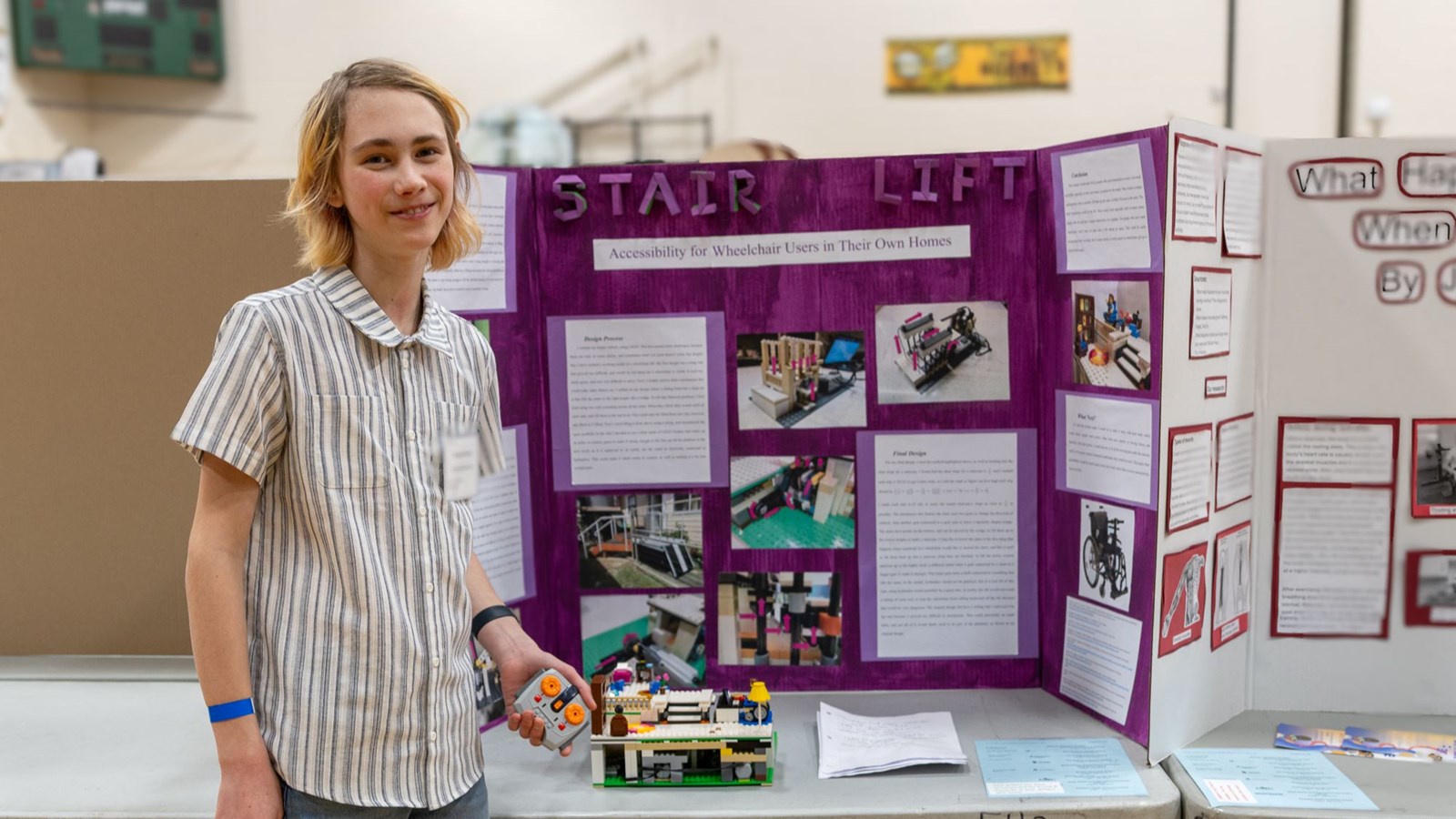Science Sparks & Brainwaves: 55 Years of Genius at the Winnipeg Schools’ Science Fair
April 11, 2025 School Activity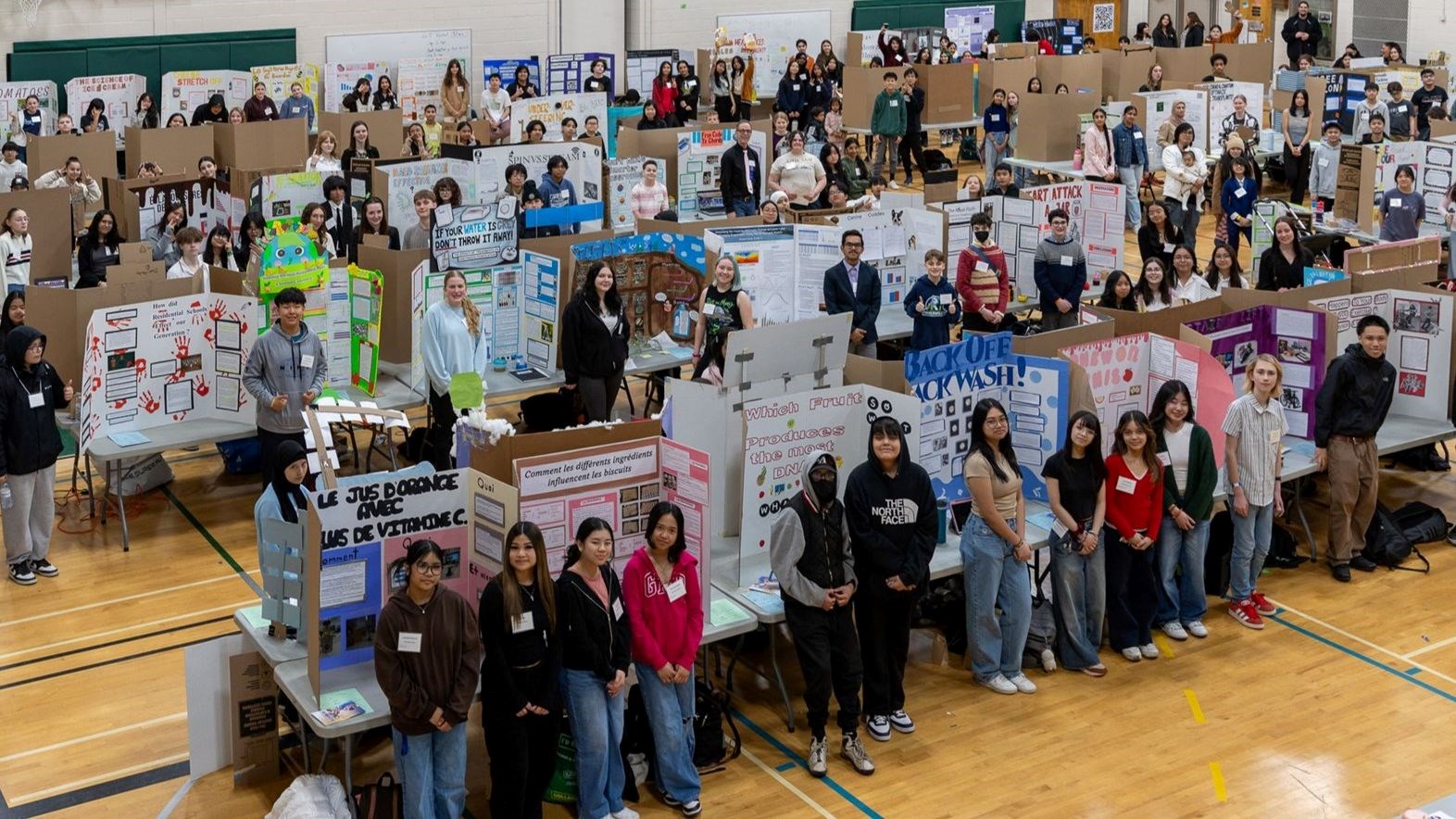
Call it a chain reaction of brilliance — the 2025 Winnipeg Schools’ Science Fair (WSSF) lit up the gym at Tec Voc with 131 jaw-dropping projects from 180 of the division’s most curious and creative young minds. Now in its 55th year, the annual science fair is a signature event led by Winnipeg School Division, but it’s open to students across the city. For over five decades, it has provided a platform for young minds to explore, experiment, and present their discoveries — in English, in French, and sometimes in Lego!
It’s impossible to walk around the WSSF without feeling hopeful. WSD students aren’t just future scientists — they’re already shaping the future.
This year, students wowed a record 105 volunteer judges (the most historically) with projects that showed off technical skill, heart, humour, and real-world relevance. Projects were submitted across three divisions — Junior (Grades 7-8), Intermediate (Grades 9-10), and Senior (Grades 11-12) — and covered an array of topics across scientific categories.
This year marked a rise in bilingual and culturally informed research. More students chose to present in French, reflecting the strong momentum in French Immersion programs across the division. And entries in the Ancestral Knowledge category more than doubled, from two entries last year to five this year, highlighting a growing appreciation for traditional wisdom.
When Imagination Meets Inquiry  The innovation was off the periodic charts. Grant Park High School’s James Ouyang developed a biodegradable and edible plastic using fruit cellulose, while Sargent Park student Airah Macaraig tried cracking the code on fingerprint detection on different materials, using a Barbie crime scene to set the stage.
The innovation was off the periodic charts. Grant Park High School’s James Ouyang developed a biodegradable and edible plastic using fruit cellulose, while Sargent Park student Airah Macaraig tried cracking the code on fingerprint detection on different materials, using a Barbie crime scene to set the stage.
Environmental consciousness ran deep, too. Aiyaan Faisai explored how climate change impacts Lake Winnipeg’s evaporation, while schoolmate Emily McKenna impressed judges with her research into greywater purification methods. 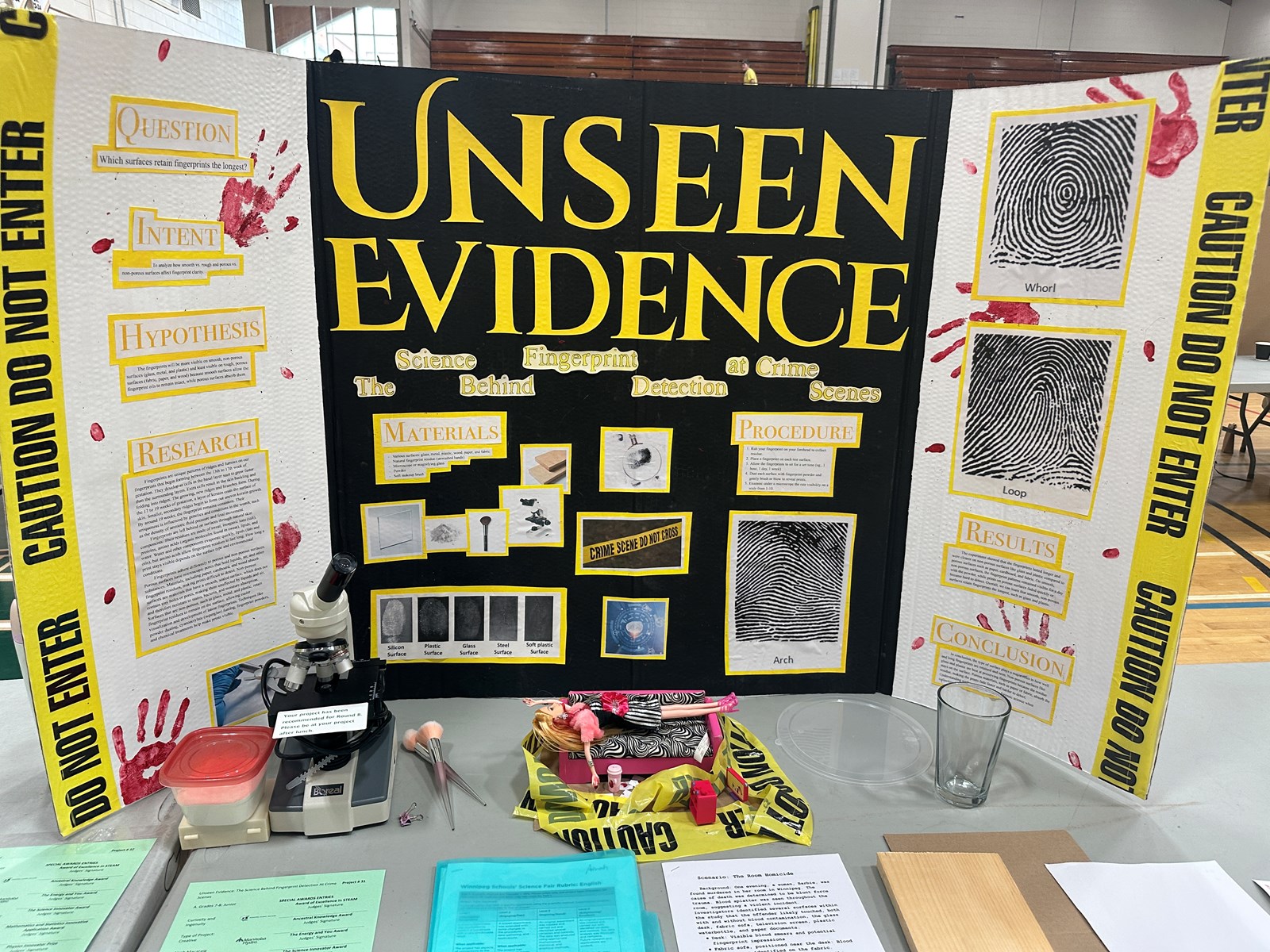 Budding engineers got hands-on, too. Student Rockford Grant combined empathy and engineering with a Lego model that demonstrated a new way for stairs to transform into a mobility ramp. Meanwhile, Grade 8er Aadithya Hanumantha Verjala brought history into the lab with a handmade clepsydra — an ancient water clock that ticked with ingenuity.
Budding engineers got hands-on, too. Student Rockford Grant combined empathy and engineering with a Lego model that demonstrated a new way for stairs to transform into a mobility ramp. Meanwhile, Grade 8er Aadithya Hanumantha Verjala brought history into the lab with a handmade clepsydra — an ancient water clock that ticked with ingenuity.
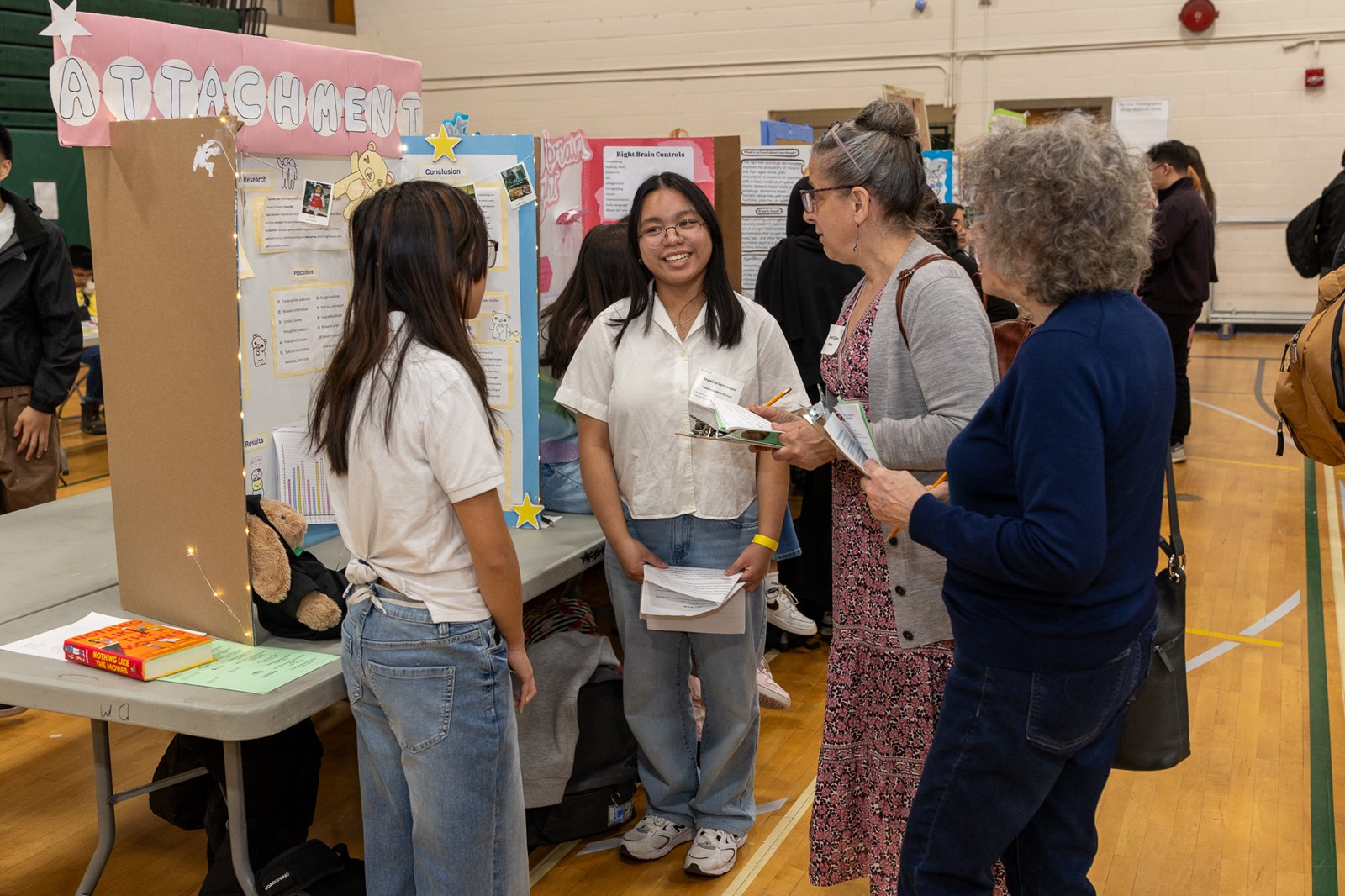
At times, bacteria were the stars of the show. Tec Voc student Chelsea Williams tested hand sanitizer effectiveness with elegant simplicity. At the same time, Tamara Mijovic from École River Heights stirred up a bubbly fermentation experiment with natural sugars and water kefir — an idea inspired by her health journey.
Celebrating a Science Hero
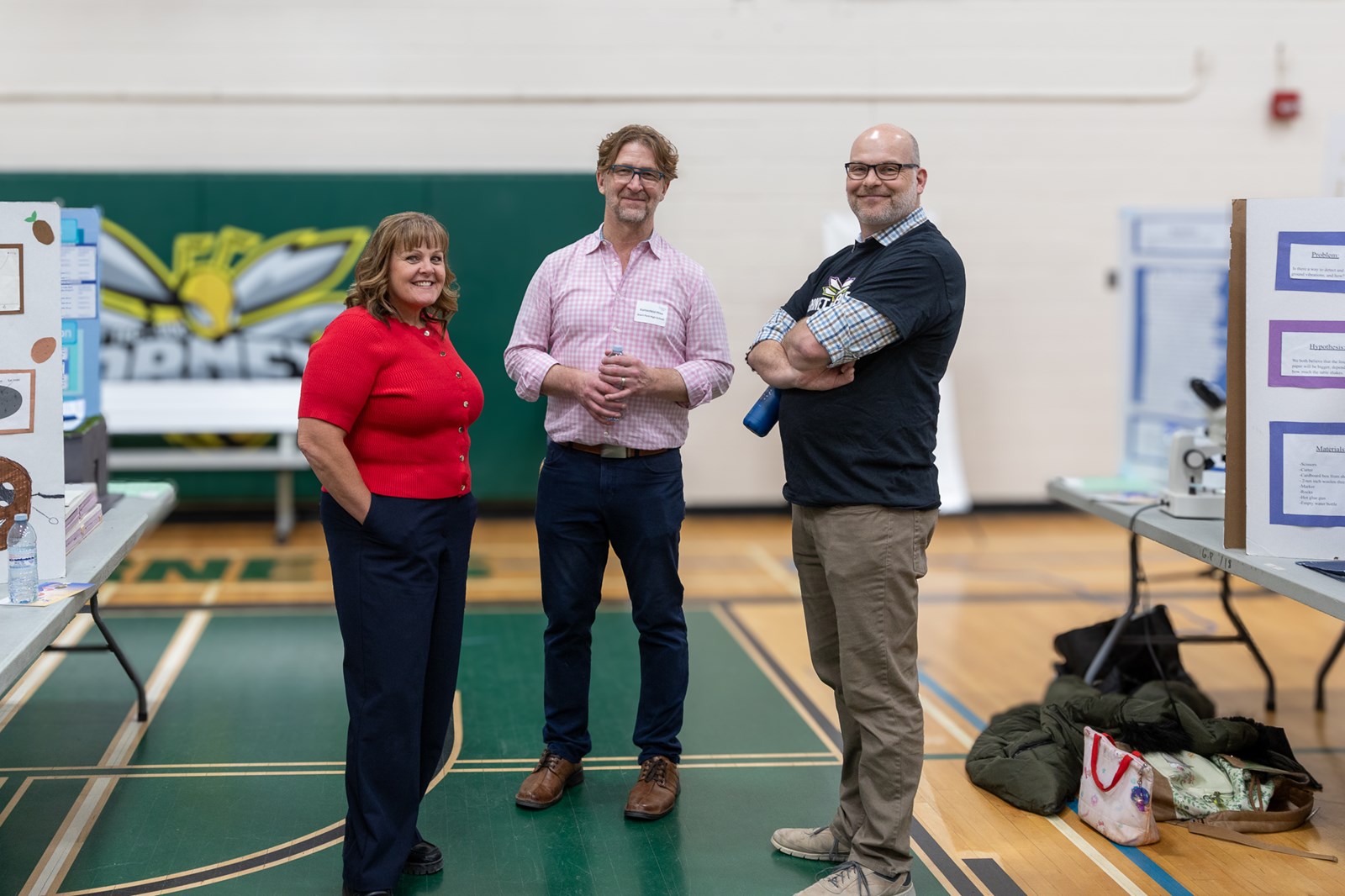 Mike Kattenfeld (centre) is a WSSF champion.
Mike Kattenfeld (centre) is a WSSF champion.
One of the fair’s most passionate champions, Mike Kattenfeld, a longtime science teacher at Grant Park High School, is retiring this year after 27 years of guiding students through the scientific process. Kattenfeld has served on the fair committee, captained judging teams, and most recently acted as head judge. He’s also taken top students to represent Winnipeg School Division for five years at the Canada-Wide Science Fair. Several local students have earned high honours on this national stage over the years.
Beyond the competition, Kattenfeld believes science fairs play a vital role in building confidence and curiosity outside the classroom. “Like many subjects, science has a vast library of knowledge to learn and share,” he says. “However, science is unique in that it allows students to authentically add to that knowledge through the scientific method or the design process.” 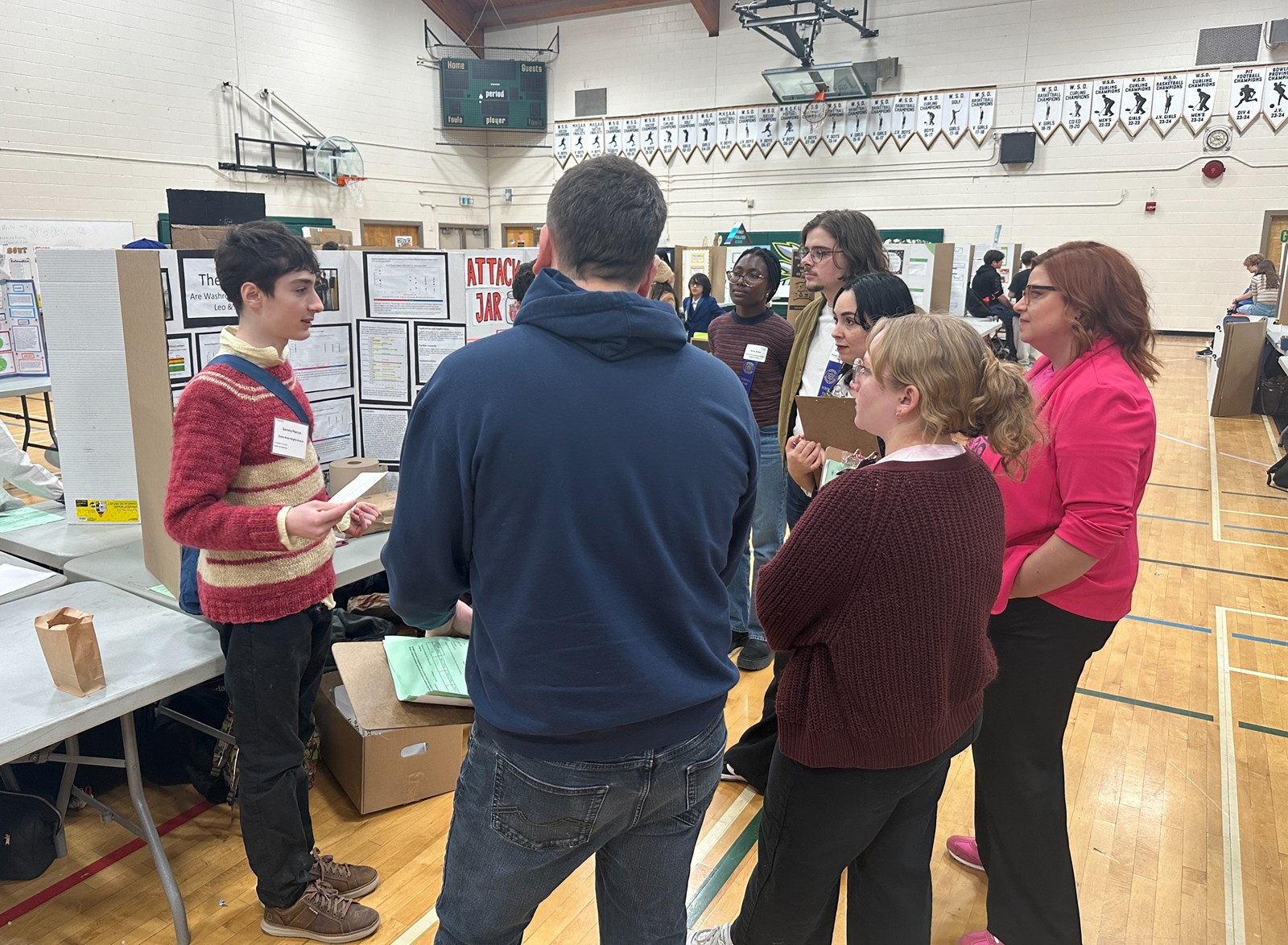 He says the benefits of students participating in science fairs go far beyond developing scientific methods. “Problem-solving and critical thinking are key skills, but students also start to evaluate the strength of arguments and the validity of the information they receive,” Kattenfeld explains.
He says the benefits of students participating in science fairs go far beyond developing scientific methods. “Problem-solving and critical thinking are key skills, but students also start to evaluate the strength of arguments and the validity of the information they receive,” Kattenfeld explains.
Over the years, Kattenfeld has coached dozens of students in regional and national competitions. When asked what defines a successful science fair project, he doesn’t hesitate. “To develop a strong and clear message. A presentation needs to share ideas clearly without bombarding judges with facts, acronyms and such,” he says. “We also want students to share the story of their project: what inspired them, challenges they faced, the accomplishments they experienced along the way.”
Watch them in action in the Instagram reel here.


